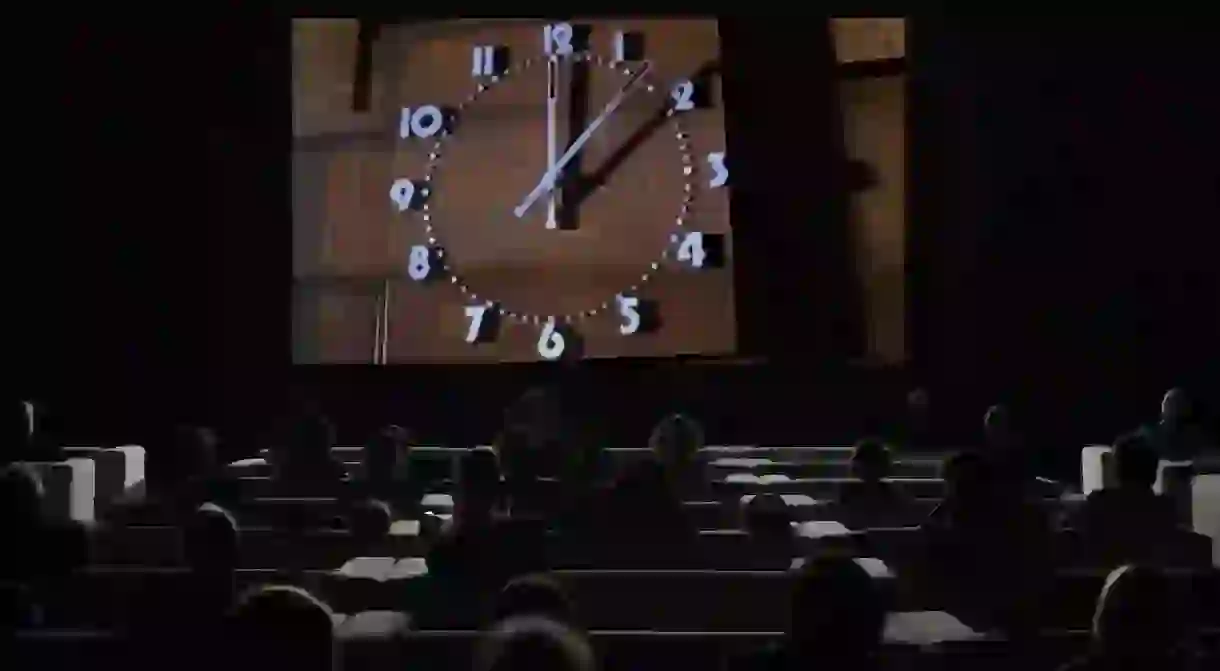This Is the One Artwork You Need To See This October

With so much art to see around the world, Culture Trip does the groundwork so you don’t have to by highlighting the one artwork you can’t miss each month. This October, clear your schedule to spend time watching Christian Marclay’s The Clock at Tate Modern –it’s worth every second, minute or hour you can spare.
Christian Marclay’s The Clock is a feat of creative and technical ingenuity. The California-born artist has created a virtual timepiece by collaging together thousands of film clips in which time is referred to. And wherever the single channel video is shown around the world, it is synced perfectly to local time. So when it’s 12.08 on the screen, it’s 12.08.

Here, Johnny Depp and Humphrey Bogart share screen time. Film noir scenes are cut and pasted with classic ’80s films; obscure foreign language films are interspersed with science fiction. It’s a film genre mash-up in which all manner of time-keeping devices have the starring role, from clock towers, station clocks and grandfather clocks to digital alarm clocks, pocket watches and wristwatches.
The Clock ignores the construct of time as a marker of history. Instead, the video installation contemplates the many roles time plays in our daily lives. Time can be used as an alibi. Ticking clocks are used as a filmic device to heighten anticipation and even frustration in characters. There are undercurrents of uncertainty towards an imminent future. And the act of waiting is prevalent, even though, miraculously, hours can disappear with ease while watching this work.

You might also like: These Are Blockbuster Exhibitions To See in London
Made in 2010 after years of meticulous and rigorous production, The Clock won Marclay the prestigious Golden Lion award at the Venice Biennale a year later. In 2012, the Centre Pompidou in Paris, the Israel Museum in Jerusalem and the Tate jointly acquired the work which has toured internationally, including making its Southern American debut in 2016 at Prospect.3 New Orleans. This is the first time the work has been presented at Tate.
To fully enjoy The Clock, the Tate is hosting three 24-hour screenings on 6-7 October, 3-4 November and 1-2 December from Saturday 10am to Sunday 10am. It’s free and entry is on a first come, first served basis, so expect queues. More information on entry outside opening hours can be found here.








Christian Marclay: The Clock is being screened at Tate Modern, Blavatnik Building, Level 2, Bankside, London SE1 9TG until 20 January 2019.
You might also like: Cornelia Parker’s PsychoBarn at Royal Academy of Arts













